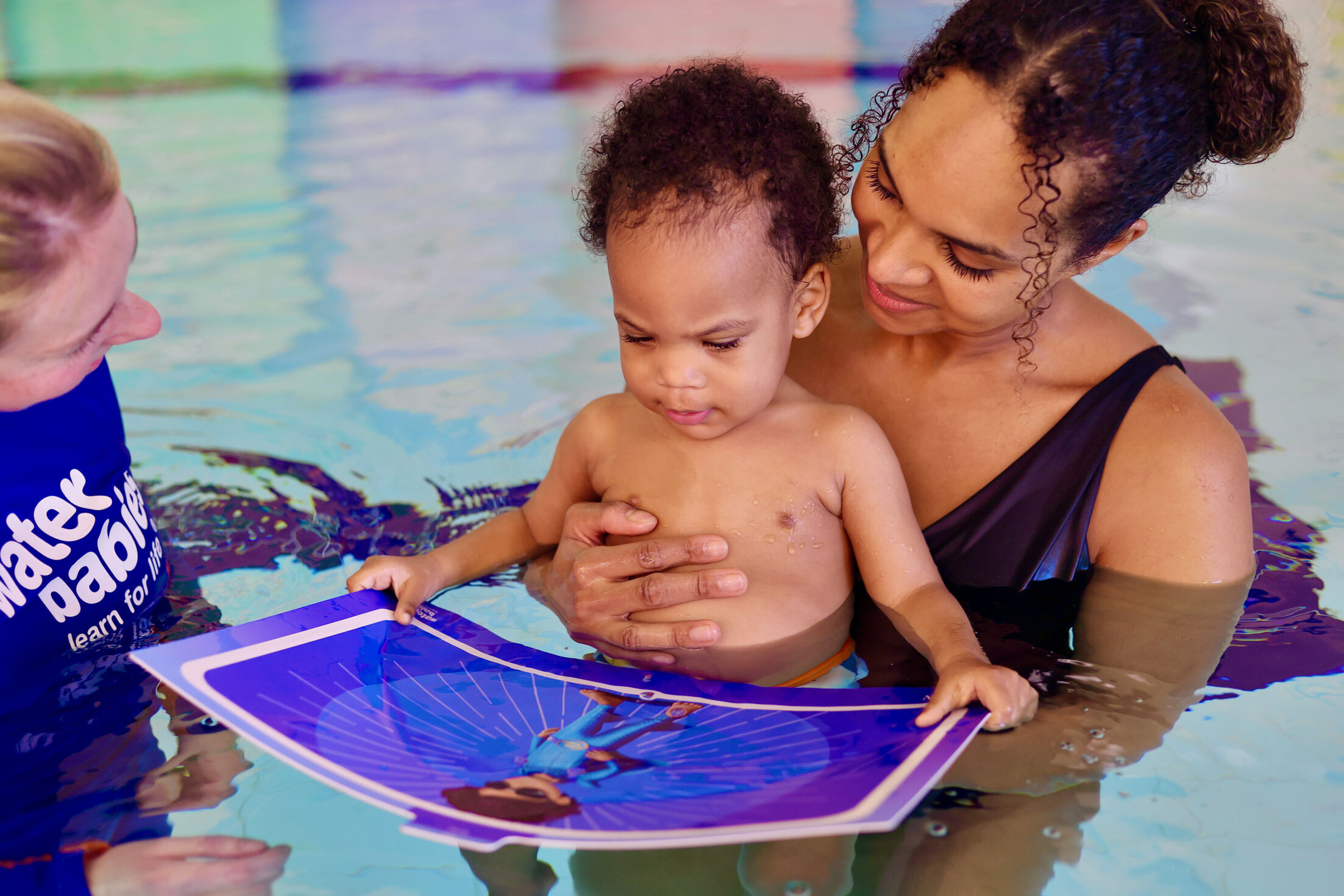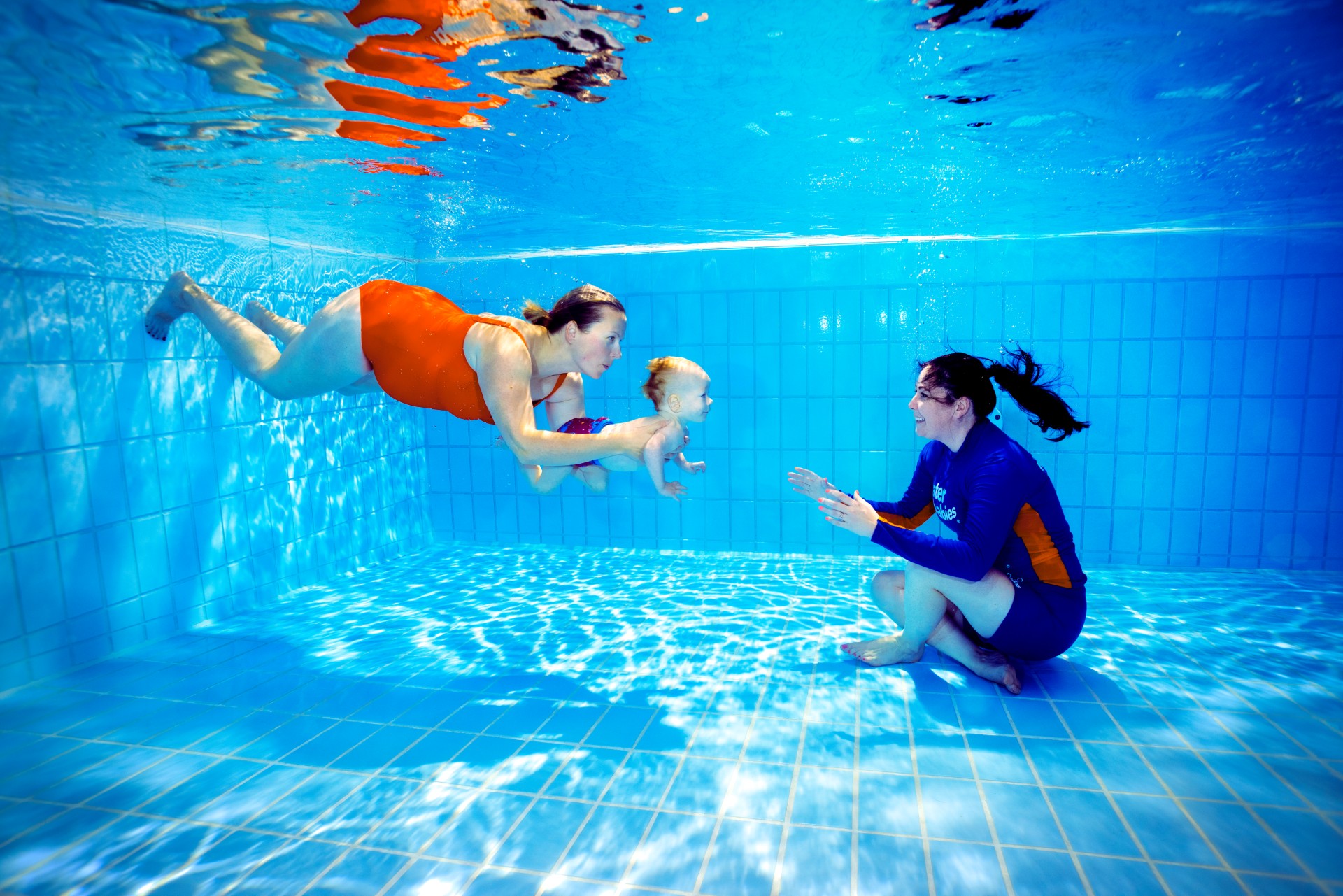If you’ve ever found yourself in tears, screaming, clinginess and reluctance to see reason while swimming, rest assured that you’re not alone. We’ve all been there. Parenting is a journey filled with joy, challenges, and plenty of surprises along the way. This is a normal part of a child’s development, and they often manifest at unexpected times, including during swim lessons. There are various reasons why your little swimmers might be having a tough day:
Hunger: Just like adults, children can get a little cranky when they’re hungry. Our tip: feed your baby a small snack one hour before class to help prevent hunger!
Fatigue: Children who don’t get enough rest before class are more prone to emotional outbursts. Your little one will need lots of energy since swimming is physical; this is especially true for children who are still building their strength and endurance.
Teething: Teething can cause discomfort and irritability in babies. The sensation of water and the new environment might aggravate these feelings.
Life Changes: Major transitions, such as entering daycare or school, the arrival of a new sibling, or caregivers returning to work, can influence your little one’s emotional state and impact their swimming lessons.
Frustration with communication: Babies and young children, when unable to communicate their feelings effectively may experience frustration leading to reluctance to participate in class.
Separation Anxiety: It’s a common phenomenon among babies and young children. If you wish to learn more about separation anxiety and its impact on swimming check out our dedicated blog post – https://www.waterbabies.ca/blogs/navigating-separation-anxiety
Personality development: As your child navigates the early stages of development, they’ll learn to assert their individuality and a desire for independence becomes evident. This newfound independence may manifest itself in lessons through behaviors like not liking being told what to do, not listening to the teacher or their carer or refusing to perform certain skills. Remember, crying doesn’t necessarily mean your child is unhappy with swimming. Often, the tears have little to do with the water itself.
Tips for Managing Emotional Outbursts in Swimming Lessons
Your understanding and support during these moments will go a long way in helping your baby feel more comfortable and confident in the pool. Here are some valuable tips to ensure that both you and your little one can continue to enjoy your time in the water.
1. Stay Calm and Carry On
The first rule is to remain calm. It’s easy to feel overwhelmed or embarrassed but remember it’s a natural way for children to express their emotions and navigate the world around them. Little ones can pick up your emotions, and moods. If you are agitated, nervous or unhappy, your baby can sense it and they might become fussy, cry, or show signs of discomfort. Take a deep breath and remind yourself that this too shall pass.
2. Seek Help from Your Teacher
One of the wonderful aspects of Water Babies lessons is the support network they provide. Your swim teacher is there to help guide you through these moments. Also, don’t hesitate to reach out to your office for assistance, advice, or even just a reassuring word. They’ve likely seen it all before and can offer valuable insights to help you navigate the situation.
3. Offer Distractions and Comfort
Sometimes, a simple distraction can work wonders. Having a water-safe toy from home can be handy to engage your child and help soothe their emotions. The familiarity of a beloved toy can provide a sense of security and comfort.
4. Celebrate Every Success
If your baby experiences crying, screaming, clinginess or reluctance, your teacher may offer regressions or alternatives. Remember to remain positive and offer constant encouragement. Don’t forget to celebrate even the smallest successes. There is nothing wrong with having an off day or needing a bit more time to get there.
5. Take a Break, Stay in the Pool
Keep your child in the pool during this time and allow them to gradually acclimate to our classes, the water, and their surroundings. It can help reduce anxiety and make future swim lessons more enjoyable both for you and your baby.
6. Remember, You’re Not Alone
It’s a common experience for parents. You’re not the first, and you certainly won’t be the last to encounter this challenge. Most of the parents around you have likely faced similar situations and can empathize with your predicament. So, let go of any embarrassment and focus on supporting your child through their emotions.
Conclusion
Emotional outbursts are a normal part of childhood, and they can occur anywhere – even in the pool. By staying calm, seeking help, providing comfort and understanding the possible reasons behind the tears, you can navigate these challenging moments. Remember, both you and your little one are on a learning journey, and these experiences contribute to their growth and development. So, don’t let a tantrum dampen your enthusiasm for swim classes. Dive in, stay patient, and enjoy the precious moments you share with your little one in the water.


